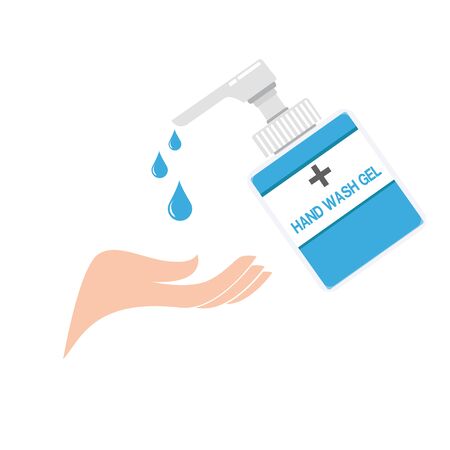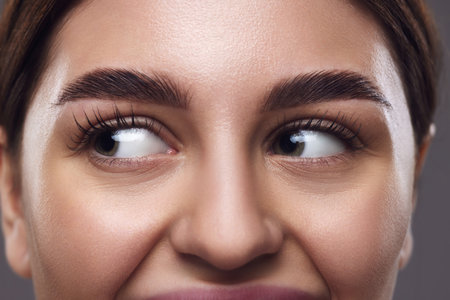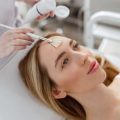Understanding Under-Eye Fillers
Under-eye fillers, also known as tear trough fillers, have become an increasingly popular non-surgical solution for those looking to combat dark circles, hollowness, and early signs of aging beneath the eyes. These injectable treatments typically use hyaluronic acid-based products to add subtle volume and smooth out the under-eye area, resulting in a refreshed and more youthful appearance. In the United States, demand for under-eye fillers is driven by busy professionals, beauty enthusiasts, and anyone seeking a quick fix to look less tired without going under the knife. The appeal lies in their convenience—treatments are fast, require minimal downtime compared to surgical options, and deliver immediate results. This popularity reflects broader American trends toward minimally invasive cosmetic procedures that fit seamlessly into active lifestyles while still delivering noticeable improvements.
2. What Causes Bruising and Swelling?
Bruising and swelling are two of the most common side effects people experience after under-eye filler treatments. But why do they happen? When a needle or cannula is inserted to inject filler, it can disrupt tiny blood vessels under the delicate skin around your eyes. This leads to blood leaking into the surrounding tissue—resulting in bruising. Swelling, on the other hand, occurs as your body’s natural inflammatory response to both the injection process and the presence of a new substance (the filler) in your skin.
Several factors can increase your risk for these side effects. Understanding them can help you prepare better and potentially minimize downtime:
| Risk Factor | Description |
|---|---|
| Skin Type | Thinner, more sensitive skin tends to bruise and swell more easily. |
| Medications & Supplements | Blood thinners, aspirin, NSAIDs, fish oil, and vitamin E can heighten bleeding and bruising risk. |
| Lifestyle Choices | Alcohol consumption before or after treatment can dilate blood vessels and worsen bruising. |
| Technique & Injector Skill | An experienced injector with precise technique may reduce trauma to blood vessels and tissue. |
| Pre-existing Conditions | Certain medical conditions that affect blood clotting may also contribute to increased bruising. |
It’s important to have a detailed consultation with your provider so they can assess your unique risk factors. While some swelling and bruising are nearly unavoidable due to the anatomy of the under-eye area, knowing what contributes to these effects empowers you to take proactive steps—such as pausing specific supplements or avoiding alcohol—to help minimize them.

3. What’s the Typical Downtime?
When considering under-eye fillers, understanding the typical recovery timeline is key to managing expectations and planning your schedule. While these treatments are minimally invasive compared to surgical options, some downtime should still be anticipated. Most people experience swelling and bruising immediately following their appointment, with both symptoms peaking within the first 24 to 48 hours. For the majority of patients, noticeable swelling subsides within three to five days, while bruising can linger for up to a week. Individual experiences will vary based on factors like skin type, injection technique, and how your body naturally heals.
It’s common to see mild residual puffiness or subtle discoloration even after the initial few days, but these effects are generally easy to conceal with makeup. Many Americans plan their filler appointments ahead of major social events, allowing at least one full week for visible side effects to resolve. For most people, downtime doesn’t mean being out of commission—many return to work or regular activities within a day or two, provided they’re comfortable with potential minor bruising or swelling. If you have a low tolerance for visible marks or want to look your absolute best for an event, giving yourself that seven-day buffer is a smart move.
4. Tips to Minimize Side Effects
After receiving under-eye fillers, its natural to want the smoothest recovery possible. While some degree of bruising and swelling is common, there are several practical strategies you can use to minimize these side effects and reduce your overall downtime. Here’s how you can tailor your post-procedure care to fit your American lifestyle, balancing work, social life, and family commitments.
Pre-Treatment Preparation
Planning ahead can make a significant difference in your recovery. In the week leading up to your appointment, consider the following:
| Action | Why It Helps | Typical Recommendation |
|---|---|---|
| Avoid blood thinners (aspirin, NSAIDs, certain supplements) | Reduces risk of bruising | Stop 5-7 days before (with doctor approval) |
| No alcohol consumption | Alcohol increases bruising risk | Avoid 24-48 hours pre-treatment |
| Schedule around important events | Allows time for visible swelling or bruising to subside | Plan at least 1-2 weeks before big occasions |
Post-Treatment Dos and Donts
- Use cold compresses: Apply gently to the treated area for 10-15 minutes every hour during the first day to help control swelling.
- Stay upright: Sleep with your head elevated for the first couple of nights; this helps minimize overnight swelling.
- Avoid strenuous activity: Skip heavy exercise, hot yoga, or saunas for at least 24-48 hours to prevent increased blood flow that can worsen bruising.
- No touching or massaging: Refrain from rubbing or applying pressure unless advised by your provider.
- Follow medication guidelines: If prescribed arnica or bromelain supplements (popular among Americans for bruise reduction), take as directed by your provider.
- Stay hydrated and eat well: A balanced diet rich in vitamin K (think spinach, kale) supports healing.
Smart Recovery Strategies for Busy Schedules
If you’re juggling work-from-home meetings or need to be out and about quickly, consider these quick fixes:
- Clever concealing: Use a high-quality concealer to mask any residual discoloration if you must return to public life sooner than expected.
- Sunglasses are your friend: Not just for style—large frames can discreetly cover swelling while protecting sensitive skin from UV rays.
- Communicate with your provider: If you notice unusual pain, excessive redness, or persistent lumps, reach out promptly—early intervention prevents complications.
Quick Reference: Do’s and Don’ts Table
| Do’s | Don’ts |
|---|---|
| Apply ice packs intermittently Sleep with head elevated Eat foods rich in vitamins C & K Follow aftercare instructions exactly Check in with your injector if concerned |
Avoid blood thinners/alcohol Skip intense workouts Don’t touch or rub under eyes No facials/chemical peels for a week Avoid direct sun exposure immediately after treatment |
If you incorporate these tips into your routine, you’ll maximize your comfort and minimize unsightly side effects—helping you get back to everyday American life with confidence and ease.
5. When to Worry: Signs of Complications
While mild bruising and swelling are par for the course after under-eye fillers, it’s crucial to know when these symptoms cross the line from normal recovery into territory that requires medical attention. Understanding what’s typical and what should raise a red flag empowers you to act quickly if issues arise.
What’s Normal?
Some degree of puffiness, tenderness, and discoloration is expected in the first few days following treatment. Minor lumps or unevenness may occur but often settle as the filler integrates with your tissue. Mild itching or numbness can also be part of the healing process, especially within the initial week.
Warning Signs You Shouldn’t Ignore
Certain symptoms go beyond routine post-procedure effects. If you experience any of the following, it’s time to reach out to your provider:
- Severe pain or rapidly worsening swelling—especially if it’s one-sided or accompanied by redness and warmth
- Persistent bruising that deepens in color or spreads significantly after the first few days
- Changes in vision, including blurriness, double vision, or sudden loss of sight
- Pale or dusky skin near the treated area (this can signal compromised blood flow)
- Pus, foul odor, or open wounds
When in Doubt, Call Your Provider
If anything feels off—whether it’s unexpected discomfort or just a gut feeling—it’s always safer to check in with your injector. Most reputable providers expect follow-up questions and would rather address concerns early than manage complications later. Quick intervention can prevent more serious problems and give you peace of mind during your recovery journey.
6. Managing Expectations: Real Stories and Expert Insights
When it comes to under-eye fillers, understanding what real patients experience can help set realistic expectations for your own recovery. Many Americans who have undergone this popular treatment share similar stories: mild to moderate bruising, swelling that peaks within the first 48 hours, and a gradual return to normal over one to two weeks. For instance, Sarah M., a 34-year-old from Chicago, recalls, “I definitely had some puffiness and a couple of small bruises, but nothing makeup couldn’t cover after a few days. I was back at work by Monday.” Likewise, Michael R., a New Yorker in his early forties, notes, “I was nervous about looking ‘overdone,’ but my doctor explained everything. The swelling went down after a week, and now I just look more rested.”
Expert Commentary on Recovery
Board-certified dermatologists and plastic surgeons across the U.S. emphasize that while downtime is generally minimal, every patient’s response is unique. Dr. Emily Chen, a Los Angeles-based dermatologist, explains, “Most patients see significant improvement within 7-10 days, but minor swelling or residual bruising can linger for up to two weeks. Good communication with your provider and following post-care instructions are key to a smooth recovery.” She also points out that choosing an experienced injector minimizes risks and helps ensure natural-looking results.
Setting Yourself Up for Success
Experts recommend scheduling treatments with enough buffer before major events—ideally at least two weeks ahead. Avoiding blood thinners like aspirin and supplements such as fish oil before your appointment can also reduce bruising risk. Remember, most side effects are temporary and part of the process as your body adjusts to the filler.
Balanced Perspective for Peace of Mind
Combining real patient testimonials with expert advice offers a balanced perspective: while some downtime is expected after under-eye fillers, careful planning and clear communication with your provider make the journey smoother. Most Americans find the subtle rejuvenation well worth the brief recovery period.


